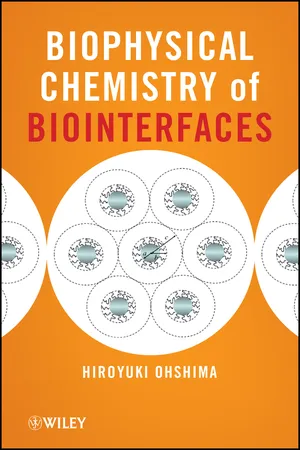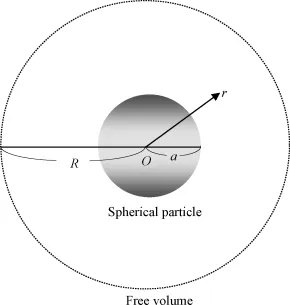
- English
- ePUB (mobile friendly)
- Available on iOS & Android
Biophysical Chemistry of Biointerfaces
About this book
The biophysical phenomena that occur on biointerfaces, or biological surfaces, hold a prominent place in the study of biology and medicine, and are crucial for research relating to implants, biosensors, drug delivery, proteomics, and many other important areas. Biophysical Chemistry of Biointerfaces takes the unique approach of studying biological systems in terms of the principles and methods of physics and chemistry, drawing its knowledge and experimental techniques from a wide variety of disciplines to offer new tools to better understand the intricate interactions of biointerfaces. Biophysical Chemistry of Biointerfaces:
-
Provides a detailed description of the thermodynamics and electrostatics of soft particles
-
Fully describes the biophysical chemistry of soft interfaces and surfaces (polymer-coated interfaces and surfaces) as a model for biointerfaces
-
Delivers many approximate analytic formulas which can be used to describe various interfacial phenomena and analyze experimental data
-
Offers detailed descriptions of cutting-edge topics such as the biophysical and interfacial chemistries of lipid membranes and gel surfaces, which serves as good model for biointerfaces in microbiology, hematology, and biotechnology
Biophysical Chemistry of Biointerfaces pairs sound methodology with fresh insight on an emerging science to serve as an information-rich reference for professional chemists as well as a source of inspiration for graduate and postdoctoral students looking to distinguish themselves in this challenging field.
Frequently asked questions
- Essential is ideal for learners and professionals who enjoy exploring a wide range of subjects. Access the Essential Library with 800,000+ trusted titles and best-sellers across business, personal growth, and the humanities. Includes unlimited reading time and Standard Read Aloud voice.
- Complete: Perfect for advanced learners and researchers needing full, unrestricted access. Unlock 1.4M+ books across hundreds of subjects, including academic and specialized titles. The Complete Plan also includes advanced features like Premium Read Aloud and Research Assistant.
Please note we cannot support devices running on iOS 13 and Android 7 or earlier. Learn more about using the app.
Information



Table of contents
- Cover
- Title Page
- Copyright
- Preface
- List of Symbols
- Part I: Potential and Charge at Interfaces
- Part II: Interaction Between Surfaces
- Part III: Electrokinetic Phenomena at Interfaces
- Part IV: Other Topics
- Index